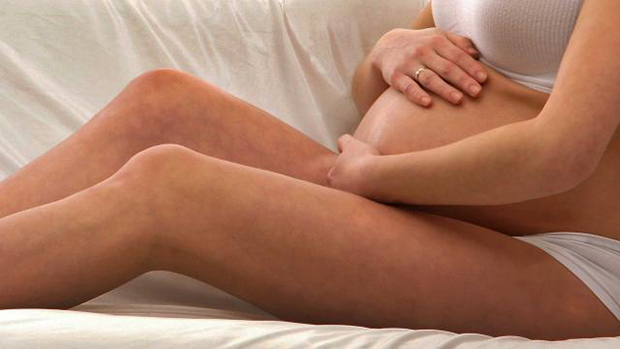You’re well into pregnancy, so where’s that “pregnancy glow” you’ve heard about? Instead of bright, radiant-looking skin, you might look more like a pimple-faced teenager. Maybe dark splotches have popped up on your face. Or perhaps you’re itchy from a rash that has sprung up around the stretch marks on your belly.
Pregnancy can bring about many strange symptoms, and your skin is not immune to the hormone changes you’re experiencing. Fortunately, while annoying, most of these conditions are harmless and will subside after you give birth.
Let’s take a look as some of the most common skin problems that pop up during pregnancy and how to manage them. We’ll also discuss one serious condition of which to be aware.
Pregnancy can bring about many strange symptoms, and your skin is not immune to the hormone changes you’re experiencing. Fortunately, while annoying, most of these conditions are harmless and will subside after you give birth.
Let’s take a look as some of the most common skin problems that pop up during pregnancy and how to manage them. We’ll also discuss one serious condition of which to be aware.

‘Mask of pregnancy’ and linea nigra
Both of these benign conditions are the result of increased pigmentation caused by a surge of pregnancy hormones. Melasma, also known as the “mask of pregnancy,” causes dark splotches to appear on your face, often on the nose and cheeks. Linea nigra is a dark line that can form between your belly button and pubic area during pregnancy.
If you experience either of these, you’re not alone. Nearly 75 percent of pregnant women will have the mask of pregnancy, and 90 percent will notice linea nigra.
This increase in pigmentation can affect any area of your body that is more pigmented. Many women, for example, report much darker freckles or areolas than normal. And the darker your skin tone, the more you may notice these changes.
You can’t totally prevent these conditions, but using a good sunscreen, especially on your face, can help reduce the effects. Don’t worry – you won’t be stuck with these changes forever. Most should fade after you give birth. Melasma sometimes doesn’t go away, but a dermatologist can treat it with medication after pregnancy.
Stretch marks
Almost every pregnant woman will get stretch marks, which are reddish streaks that run down your breasts or belly. They’re more likely to appear if you gain weight rapidly, so follow your doctor’s recommendation regarding weight gain. However, getting stretch marks sometimes just comes down to genetics.
After birth, your stretch marks should turn a less-obvious silver or white color. You can try to prevent stretch marks by keeping your skin moisturized with cocoa butter or lotion. If you’re tempted to try an herbal remedy, talk to your doctor first.
Acne
Many of my patients complain about this during pregnancy. All those hormones in your body can cause oil glands to secrete more oil, causing breakouts.
Try cleaning your face with an over-the-counter-face soap in the morning and evening. Most over-the-counter topical treatments are safe in pregnancy, but if you have any concerns about a certain product, you can ask your doctor. There are a few topical prescription medications we can try during pregnancy, but your acne should get better after your baby is born.
Skin tags
These small, loose, harmless growths of skin can appear anywhere on your body during pregnancy, but most commonly pop up under the arms and breasts. Unfortunately, there’s nothing you can do to prevent them, but they can easily be removed after pregnancy if you want.
PUPPP
Itchy rashes are common during pregnancy. PUPPPs, pruritic urticarial papules and plaques of pregnancy, is the most common pregnancy rash. These itchy, red patches spring up around stretch marks – usually toward the end of pregnancy when your belly is stretched the most – and can spread to the arms, legs, and buttocks.
This condition is harmless, but I know from experience it can be annoying. PUPPPs will go away after you give birth, but don’t feel like you need to suffer through it until then. We can give you a steroid cream that will relieve the itching and prevent it from spreading. This cream is safe for you and your baby.
Cholestasis of pregnancy
There are times you shouldn’t ignore itchy skin. Cholestasis of pregnancy is a liver disease that results from high amounts of pregnancy hormones affecting the normal flow of bile in the gallbladder. This condition occurs in the third trimester and can cause severe itching over the whole body. It’s often worse on the palms and soles of the feet and causes patients to feel miserable and be unable to sleep. Cholestasis of pregnancy also may be accompanied by jaundice (a yellow discoloration of the skin and eyes). A simple blood test can verify if you have cholestasis of pregnancy, and oral medication may treat it. Delivery also cures it, so we may recommend inducing labor when you are closer to your due date.
Your body goes through immense changes during pregnancy. Most skin conditions are more annoying than anything. But tell your doctor about your symptoms to rule out anything serious – and to find potential relief!
